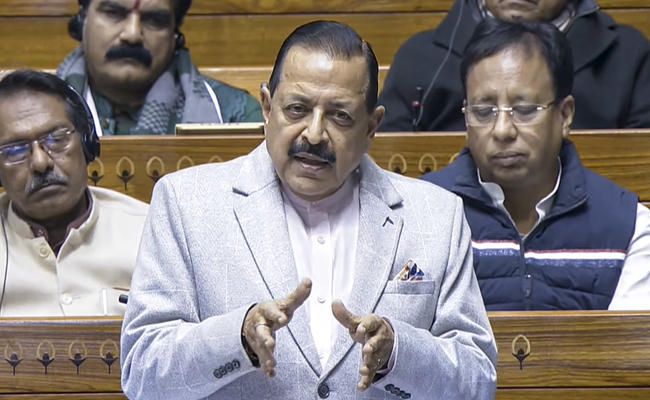New York, Feb 5: The 2026 World Cup final will be played at MetLife Stadium in New Jersey, beating out Texas and California for soccer's showcase game.
FIFA awarded the July 19 championship to the 1.6 billion venue, which opened in 2010, the culminating match of an expanded 48-nation, 104-game tournament that will be spread across three nations for the first time.
Located about 10 miles from Manhattan, MetLife was promoted by both New York and New Jersey, where the stadium was built in the Meadowlands marshes. The land of Bruce Springsteen, Jon Bon Jovi and Frank Sinatra will be the focal point of the globe on that Sunday, when either Lionel Messi's Argentina will try to win its second straight title or a successor will emerge.
"It will be a celebration of our diversity and our values," New Jersey Gov. Phil Murphy said in a telephone interview. "The bigger picture is what leads up to it and what we leave behind for the decades to come."
FIFA made the announcement Sunday at a Miami television studio, allocating the opener of the 39-day tournament to Mexico City's Estadio Azteca on June 11 and the finale to the home of the NFL's New York Jets and Giants.
Dallas Cowboys owner Jerry Jones had lobbied for the final to be at his AT&T Stadium in Arlington, Texas.
"The competition was dealing with the perception of the coastal, of a New York, or a Los Angeles," he said. "If this were totally being played to just America and the United States, that wouldn't have been such a formidable thing to overcome. But internationally, that's formidable to overcome."
All games from the quarterfinals on are being played in the United States. Semifinals are on July 14 at AT&T and the following day at Mercedes Benz Stadium in Atlanta.
Quarterfinals are at Gillette Stadium in Foxborough, Massachusetts, on July 9, at SoFi Stadium in Inglewood, California, the following day, and at Arrowhead Stadium in Kansas City, Missouri, and Hard Rock Stadium in Miami Gardens, Florida, on July 11. The third-place game will be at Hard Rock on July 18.
The U.S. team will train in suburban Atlanta ahead of the tournament and open at SoFi on June 12. The Americans play seven days later at Seattle's Lumen Field and finish the group stage at SoFi on June 25.
Since reaching the semifinals of the first World Cup in 1930, the U.S. has advanced to the quarterfinals just once, in 2002.
"It's about making our nation proud," American coach Gregg Berhalter said. "One way to really grow the game and to change soccer in America forever is to perform well and do something that no U.S. team has ever done before."
Seventy-eight of 104 matches will be played in the U.S., with 13 games each in Mexico and Canada, and there as many as six matches a day.
AT&T will host a tournament-high nine matches. There will be eight each at MetLife, SoFi and Mercedes Benz; seven apiece at Hard Rock, Gillette Stadium in Foxborough, Massachusetts, and NRG Stadium in Houston; and six apiece at Lumen, Lincoln Financial Field in Philadelphia, Arrowhead Stadium in Kansas City, Missouri, and Levi's Stadium in Santa Clara, California.
FIFA officials did not publicly explain their site-decision process.
Philadelphia's final match will be a round-of-16 meeting on July 4, the 250th anniversary of the signing of the Declaration of Independence. Philadelphia's Citizens Bank Park hosts baseball's All-Star Game, likely on July 14.
Santa Clara is the only U.S. site that will not host a game after the new round of 32. AT&T will host two round-of-32 matches.
FIFA expanded the World Cup from 32 to 48 nations, increased matches from 64 and announced the 16 sites in 2022.
Murphy learned of the decision while at a watch party in a MetLife Stadium suite. He was not discouraged by a British tabloid report on Jan. 17 that said the final would be at AT&T.
"We did everything we could to put our head downs, focus on the job at hand, kind of push out the noise, and that turned out to be a winning formula," Murphy said.
Mexico will play its second match at Guadalajara's Estadio Akron on June 18 and return to Azteca on June 24. Mexico City will host five matches, with four each at Monterrey's Estadio BBVA and Guadalajara.
Canada will play its opening first-round match in Toronto on June 12, then at B.C. Place in Vancouver, British Columbia, on June 18 and 24. Each Canada venue will host 13 games.
A nation will need to play eight matches to win the title, up from seven since 1982.
All 11 of the U.S. stadiums are home to NFL teams. Hard Rock will host this year's Copa Am rica final on July 14, while MetLife was the site of the 2016 Copa Am rica final.
Both the 1970 and 1986 World Cup finals were at Azteca.
When the U.S. hosted the 24-nation, 52-game tournament in 1994, the final was at the Rose Bowl in Pasadena, California, the opener at Chicago's Soldier Field and the semifinals at Giants Stadium in East Rutherford and the Rose Bowl.
With the additional teams, the length of the tournament will grow from 29 days in the shortened 2022 schedule in Qatar and 32 days for the 2018 tournament in Russia.
Only one match will involve a team that has not had at least three off days. FIFA divided the group stage into East, Central and West regions and intended to make travel shorter for group winners.
The stadiums in Arlington, Atlanta and Houston have retractable roofs that are expected to be closed because of summer heat, and Inglewood and Vancouver have fixed roofs.
Let the Truth be known. If you read VB and like VB, please be a VB Supporter and Help us deliver the Truth to one and all.
Bengaluru (PTI): A woman was booked on charges of obstructing a police inspector from discharging his official duties and threatening to commit suicide if he did not accept her love proposal, police said on Wednesday.
The 45-year-old inspector attached to the Ramamurthy Nagar Police Station here alleged that the woman repeatedly harassed him, they said.
According to his complaint, the harassment began on October 30, when he started receiving calls from an unknown woman from multiple phone numbers.
During these calls, she allegedly spoke incoherently and claimed to have close links with several highly placed individuals, including the Chief Minister, Deputy CM, Home Minister and other political leaders.
Police said the woman sent photographs via WhatsApp purportedly showing herself with these dignitaries and claimed she could use their influence to compel the inspector to accept her proposal. She also allegedly threatened to use her contacts against him if he refused.
ALSO READ: “Bleeding on the road, I begged for help but no one came”: Bengaluru woman recounts husband’s death
The inspector said that he advised her to visit the police station and submit a written complaint if she had any grievance. However, she did not do so and instead continued to repeatedly call and send messages, which disturbed his official duties, the FIR said.
According to the FIR, on November 7, the woman allegedly visited his office and handed over an envelope containing some tablets along with handwritten letters. The letters contained emotionally charged and inappropriate content, and the woman claimed they were written using her blood, indicating obsessive behaviour.
Despite being clearly informed that the number she was contacting was an official departmental number meant for public service, she allegedly continued making unnecessary calls and messages, causing mental harassment and obstruction to his day-to-day duties, he alleged.
During the inquiry, police learnt that the woman had allegedly exhibited similar behaviour with other police and government officials in the past, it stated.
On December 12, she allegedly went to his police station and shouted and threatened to commit suicide and ruin the inspector's career if he did not respond to her proposal, prompting him to lodge a complaint.
"Based on the complaint, a case was registered against the woman under Sections 132 (assault or criminal force to deter a public servant from discharge of duty), 351(2) (criminal intimidation) and 221 (obstructing a public servant in discharge of public functions) of the Bharatiya Nyaya Sanhita at the Ramamurthy Nagar Police Station. The matter is under investigation," police said.





